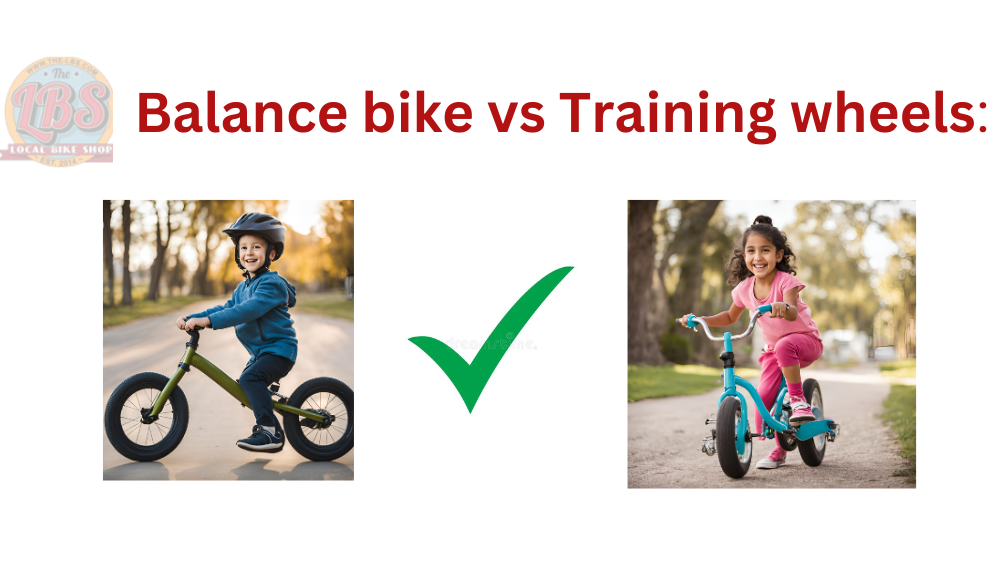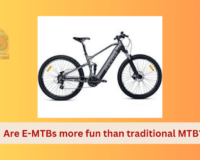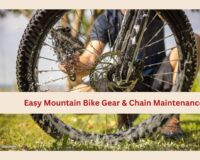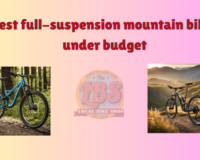Balance bike- the cherished childhood memories, one love! Teach kids to “Livin’ the bike life” as they say early in life.
“The best way to learn is by doing.” as Benjamin Franklin mentioned, let your kid glide on a balance bike, these are more effective than pedaling.
Who else agrees pedals can get quite complex with the kids? Watch your little one’s confidence as they ride a balanced bike. No pedals but “yes” confidence, this bike has all your kid needs.
Many parents find strange confusion about whether to train kids on balance bikes or training wheels. The young age children are curious to learn, they can start well with a balance bike level up to a pedal bike, and grow over in skills.
Today we explore the facets of balance bike and demystify the myths about training wheels. And understand if a balanced bike is better than training wheels for your kid. We will also discuss if training wheels are a must to train.
How can young kids learn to balance a bike?
As early as it can be is a good start for a kid, with around 18 months, kids can understand the basics of a balance bike. You can make it fun and engaging for your kid to ride on a balance bike, but be patient, as your child is slowly going to adapt to this and they will require you to be mentoring and be supportive at the same time.
Let your kids practice on a flat and smooth surface, and don’t be too controlling. It’s your kid and you want to get as protective as you can, but this might hinder their confidence and may make them nervous.
Does my kid need a balance bike?
A balance bike is a pedal-less bicycle designed for toddlers and pre-schoolers. The purpose here is to allow kids to learn balance and develop early driving skills. Even the height of the bike seat is designed small so kids can push off the ground, using their feet. There is no need for pedaling so no pressure on kids is seen.
Many of us, actually don’t know the first bicycle was a balance bike, German Inventor Karl Von Drais developed a bicycle, with no pedals on it in 1817 known as a swift walker, and that was a wooden beam, and wooden wheels, and iron rims, and leather-covered tires
This concept now come to the mainstream again, as the balance bike for kids. Unlike traditional bicycles, this one is lightweight, and made with aluminum and plastic. It is not the only thing, the seat posts are adjustable, and even the handlebars are adjusted to the comfort of the child.
Children are not ready yet for the pedal movements. Genuine training on balance bike however can lay a good foundation in balance and coordination to start with a training wheel, so far.
Why Should I get a Training wheel for my kid?
Training wheels give your kid a stable base when pedaling and steering. This is the one that your bike needs so that your child can cope with the fear of falling when he is a beginner in learning to ride a bike. Overall, on the safer side, when it comes to bikes with pedals.
The risk of falls and injuries is quite common in pedaling, and to mitigate and reduce the chances, the presence of training wheels can be a good option. But is it better than a balance bike, we will surely find that out, by the end.
Training the wheel can be essential to help your kid in pedaling, braking, steering, and developing core muscle memory in a controlled environment. With training wheels on, the kid can gradually accommodate the motion of riding, and prepare over time to shift to his bicycle as he grows up.
Even, training wheels are available for your kid at 10, who does not know how to ride your bike yet, which is not the case with a balance bike. The great debate here is what is more suitable for a kid.
What are the best balance bikes for toddlers?
| Brand | Model | Price Range |
| Strider | Classic | $119- 189 |
| Puky | LR M | $100-150 |
| Radio Flyer | Glide and Go | $99-129 |
| Schwinn | Elm | $80-120 |
| KaZam | Bunni Ride, Dash Air | $60- $120 |
The LBS is a perfect stop for you to grab a colorful Strider 12 Classic Balance bike for your kids available in red, pink, blue, green, yellow, grey, and pro kids silver color. Even the Strider 12 Sport and 14x sport options are available, for which the price can go up to $220, and Funky Fuschia can be your girl’s next favorite.
The LBS always focuses on a positive first cycling experience, so has a range of the best balance bike collections of KaZam Bunni ride, that are more effective and on the affordable side, with teal, watermelon, and many color options, your 1-year-old can ride.
KaZam Dash Air goes cool for your 2 and 3-year-old, so shuffle our collection, and fast delivery options. We offer kids colorful helmets, for a safe experience in their fun play.
Young Toddlers who start their balance bike journey Balance bike can come at a lightweight of just 3 lbs, and a minimum saddle height of 10.4 inches for easy access. Wooden options are also available for Kindergarten students.
Balance Bikes vs. Training Wheels: A Comparison
| Features | Balance Bikes | Training Wheels |
| Purpose | To teach balance and coordination | To provide stability in pedals |
| Pedals | No pedals, no added risk | Pedals, more skill development |
| Balance development | More natural balance when steering and brakes | Can be a troublemaker with extra focus on pedals and consecutive balance |
| Safety | Fewer risks of falls | Comparatively false sense of security |
| Age to begin | Children from 1 year can start using once they learn to balance their body | For training wheels, children should be a little over 18 months old to learn more about pedals |
5 Reasons Why Balance Bikes are better than Bikes with training wheels?
The great debate is whether balance bikes or training wheels serve best for a kid training with his bicycle. But to the surprise of a 2-year-old, a balance bike is one of the best options.
1. Parents trust more on Balance bikes
Many of the parents who have tested their child with both training wheels and balance bikes, found that their child has more inclination to safer riding with a balance bike. It is because the child initially can focus on balancing the wheel, before moving to pedals. This enhances step-to-step learning in a kid.
2. Better Fit of Balance Bike
Balance Bikes fit kids much better than 12-inch training wheels, These training wheels are made to fit kids but are heavy. Balance bikes are narrow, light, and easy to handle for kids of young age. You can start kids with balance bikes much younger than that in training wheels because it comes in XS sizes compared to the other bikes.
3. Low saddle Position of Balance bike
Balance bikes have a lower minimum seat position. The smallest pedal bike available has a minimum height of 17 inches. Toddlers find it tough to ride a pedal bike comfortably, because of seat position too. At least 3 years old is needed for a bike with training wheels but even an 18-month-old can ride a balance bike.
4. Better riding experience with a balance bike
Riding with training wheels is a wobbly experience, but with a balanced bike, any challenges pass smoothly, and can execute turns well. A kid can enjoy a better riding style in gravel, dirt, and pump tracks with the balance bike. Even for the track with stability limitations be it grass or elevated uphill climbs, a balance bike, performs a way better for your toddlers.
On the other hand, training wheels move to keep them off balance. It limits up and down rides, as these plastic training wheels are not designed for such routes. It creates trouble on the sidewalks too.
5. Safety Features of Balance Bike
Balance bikes protect the interests of young riders and are designed with safety in mind. They come with no pedals and hand brakes to reduce the chances of injury. The low-height saddle ensures feet are low to the ground. Get best brakes for your bike.
Various models come with footrests for additional support and stability for kids. Not only these bikes are made of durable materials to stand a rough play on dirt by a kid. It comes with a variety of wheel sizes to accommodate the different needs of your toddler. With this safety feature on a balanced bike, Children can maneuver and control their move efficiently.
6. Narrow Profile of Balance Bike
The bike is so sleek and stylish that kids love it also for the look. But this minimalist design also has functional benefits, it minimizes protrusions, which means your kids will have fewer chances of injury due to swing when riding the balance bike. A sleek profile allows for easier movement and prevents accidental contact with bike components.
7. Surprising Benefits of Balance Bike
Balance bikes help the kid to develop motor, strengthen core muscles, and improve hand-eye coordination. These are known for faster learning, improving mental simulation, cognitive abilities, and social bonding for kids.
It’s more of a social activity kid can do with siblings friends, and even parents. Balance bikes are eco-friendly and allow children to understand and play with the surroundings.
Why training wheels don’t train kids anymore?
In the video Berm Peak Express, explained that parents no longer have to run after the children’s bikes so that they crash midway.
Kids have a hard time getting used to a pedaling motion. No one talks about how the intended use of training wheels. Training wheels bend and raise on their own, and sometimes bounce when you accidentally lean on the side, this can also cause to keep you off balance and cause you to fall. Take the wheels out, if that happens.
Training directly on the pedal without the training wheels is a good idea. It’s just the hassle to install and again remove them, as no one actually benefited much from the training wheels. You only end up having training wheels for a few days. One of the users on Training Wheels commended how his son struggled,
Sometimes training wheels are not even themselves, god knows why. Father-son cliche moment of riding a bike, with an extra two-wheeler that barely touched the ground, had to take it off immediately because it was of no use.
To teach your kid to ride a two-wheeler better, you can skip training wheels. Because, sometimes training wheel suck, they only fit on 14-millimeter axles. In case you have a different one, you need some instant modifications to fit into one.
Does training wheels five stability on a bike ride for kids?
It’s just an illusion that training wheels give stability on the ride. You will be surprised to know that, a bike in motion will stay upright on its own, without the training wheels. Though the credit goes to the gyroscopic effect of the wheels it has only some effect.
It is the geometry of the bicycle that keeps it upright, so training wheels are just an illusion that fakes safety, it’s an extra load, that gives a tilted ride to your kid and is problematic, in some cases. The concept of lean and turn is built up with muscle memory, so keep practicing with your kid to make him confident in his next ride.
5 Reasons why a training wheel is better than a balance bike?
Though balance bikes are more popular than training wheels, we have a second opinion on the following features.
- Children with physical limitations can find it easier to balance with training wheels in some cases.
- If parents prefer the child to train with wheels and pedals that’s perfect.
- Training wheels are a short-term solution before transitioning to a full-fledged bicycle.
- Training wheel gives more cycling skills and promotes independence than a balance bike.
- Even a nervous or hesitant kid can learn to ride with a training wheel, with extra support.
It actually helps pedal stationary with a block for children. They can learn when to push and when not to.
How to Wheelie for a kid? Balance bike training for your pre-schooler
Balance bikes help children learn to ride a bike. It helps to focus without the distraction of the pedal. You will be impressed by how quickly your child learns to steer and take natural turns on their balance bikes.
Studies show that children who learn on balance bikes tend to start riding independently at a younger age compared to those who use traditional bikes with training wheels. This is because balance bikes promote active postural control, which is essential for riding without support.
Simply, push your kid through the grass and chase them to help them learn. Unlike training wheels, the early-age balance bike ride develops skills like steering, braking, and staying upright on bikes. Your child no longer creates dependency such as leaning to one side). Once your child hovers over the gliding and balancing on their balance bike, it’s time to take a leap of faith. You can now upgrade them to a pedal bike.
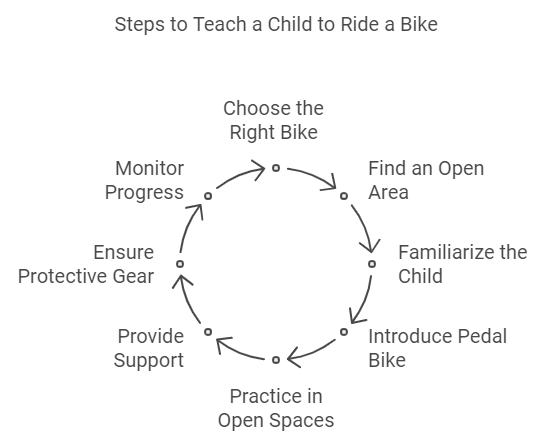
Steps for Balance Bike Training
The first step is choosing the right balance bike for your child’s age and size. A smaller bike is often easy for the child to ride.
The second step is an open area where your kid can practice comfortably. Grass, smooth, or paved paths are ideal for children to navigate and a lesser likelihood of the injury remains here. Let the child be familiar with balance bikes, not scare them off with pressure, just push them and take the feel on their first ride.
- Once a child shows readiness (usually when they can glide confidently), you can introduce a pedal bike.
- Start practicing in open spaces where they can focus on pedaling without obstacles.
- Help your child gain movement and scoot on the balance, with a slight decline.
- Allow your children to experiment with pedaling while still providing support if needed.
If you want to show your kid something, then help him understand the use of a balance bike. Any kid or toddler up to 5 can ride balance bikes. Even regular bikes can be converged into balance bikes, by removing the pedals.
Once the child learns how to balance and scoot along the feat, you give them practice sessions. Meanwhile, we ensure the child has protective gear on and increase his riding duration over time to monitor progress in different biking trails, be it on the sidewalks, park grasses, or the neighborhood.
Conclusion
The LBS- your local bike shop has options for your kids. You can train your kid early in life, to later go on a ride together. We have Hope tech products and associate with 130 other premium brands for custom bike products, dirt jump bikes, gravel bikes, mountain bikes, accessories, components, and safety gear. Do contact us for more info.
FAQS
Can a two-year-old learn how to ride a bicycle?
A child is good to start on his bicycle, at 18 months. Children can start as immediately as they can start walking confidently, under the supervision of their elders. In a balance bike, children can make their start at ages up to 3 years old.
Parents should help the child adjust to their sizes. It’s important to be aware of children’s willingness, his curiosity to look for support or ride comfortably. Even without the stabilizers, a two-year-old can learn how to ride a bike.
How to remove training wheels on kids’ bikes?
If training wheels are no longer used, you can simply remove them with a 15 mm wrench. Even adjustable pliers can do the jobs for you. Locate the nuts on the rear axle, and use your wrench to loosen them counterclockwise and easily remove them. You can re-install it anytime, you find a need to keep it at a safe place upon sliding them off.
How to install training wheels on the bike?
Kids’ bikes come with training wheels and are pre-installed. If you buy it separately, you need to read the instructions before actually beginning to install the training wheels on the kids’ bike frame.
Once the bike is stable with a bike stand, we start assembling the training wheels. We now place the wheels along the bike axle, to a vertical bracket using shoulder bolts, washers, and nuts as needed. We rotate the nuts clockwise to secure them with the necessary height with the help of the wrench. It’s our duty to place it at an equal height for better stability and movement. Get yours, Wera Bicycle Big Pack 1, 14 pieces for better assembly.
Why training wheels are the Worst?
Training wheels can train the kids to ride tilted to one side which is not a good thing. A child can find it difficult to ride in a straight line with training wheels and not that effective in uphill climbs like a balance bike. A child gets tired of figuring out how training wheels work on a straight path and rather prefers to walk the distance out.

